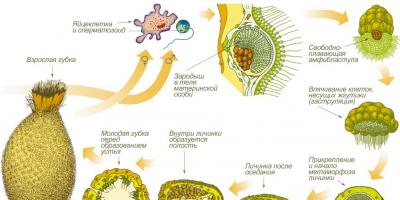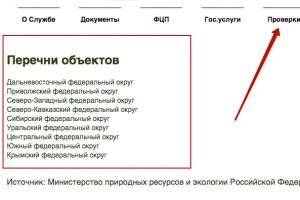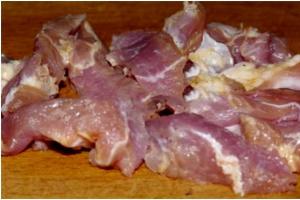Devices for sharpening the end cutting elements of a milling-canter machine are divided according to the nature of the work and are divided into two types - universal and special.
Let's look at each of these options below.
1 Machines for sharpening cutters for metal - review of factory models
Sharpening cutters for working on metal and wood is done with your own hands using universal worm gear devices.
In addition, the cutting elements of the milling-canter machine can be sharpened using special devices.
Both homemade and universal machine for sharpening end mills for wood, it is equipped with devices that ensure fastening, installation and sharpening of the workpiece.
When choosing the presented tool for sharpening the knives of a milling-canter machine with your own hands, you need to take into account the following parameters:
- versatility of the machine;
- dimensions;
- speed;
- machining accuracy class;
- electric motor power;
- installation method;
- possibility of connecting to the electrical network.
The most suitable device for sharpening the end knives of milling-canter equipment is Kaindl KSS.
This small unit is capable of professional sharpening of end knives quickly and efficiently.
This device costs several times less. professional equipment and is easy to use.
Kaindl KSS is used for adjusting the cutting edge of diamond circular saws and cutters, and is also ideal for home use. Presented equipment for drill sharpening, end knives, diamond circular saws.

Effective sharpening of cutters on hob milling units is achieved by accurately fixing the tool in any position.
For this purpose, prisms and stop pins are used. The sanding disc itself can be adjusted to work in any position using a special articulated holder.
The main feature of this machine is the use conventional drill instead of an electric motor. The universal hinge mounting system allows you to connect any type of drill to the device.
Sharpening of knives of worm-milling units can be done using a device trademark Ruko, which is equipped with a laser regulator.
This equipment can work with cutting edges with a diameter from 12 to 100 mm. The presented device is quickly and easily installed with your own hands; this is facilitated by a special step holder.

Before installing the cutting edges of hob hobs, a laser pointer can be used for precise positioning.
The sharpening angle changes smoothly (stepless). The process itself takes place using diamond discs with a diameter of 125 mm, and for more correct processing, you can attach a magnifying glass equipped with neon lighting.
2 Making a sharpening machine with your own hands
To make a device for sharpening a milling-canter blade you will need Electrical engine, with a power of no more than 1 kW, two pulleys and bearings with a shaft.
You need to start assembling a homemade machine from the bed. The bed is made using steel angles. Besides, homemade machine must be equipped with a support. To install it, a rotating bar is constructed.

This design will help in adjusting the level of inclination of the cutting part of the milling-canter machine towards the grinding wheel.
The cutters are sharpened in such a way that the installed cutting part has minimal contact with the rotating wheel.
During operation, it must be brought slowly towards the disk. A homemade sharpening machine can be made according to a pre-designed scheme. In this case, the location of the grinding wheel relative to the tool rest is taken into account.
A homemade machine for sharpening knives of milling and canting equipment must be equipped protective casing, which will cover the gap circle.
During assembly, it should be taken into account that the gap between the installed plate and the sharpening wheel should not exceed 3 mm.
Homemade mini sharpening machine The cutters of the milling-canter unit must be equipped with flanges that will provide pressure.
It is worth considering that the length of the flanges should not be less than a quarter of the diameter of the grinding wheel.
At self-assembly a paronite gasket must be placed in the gap between the nut and the flange. Thanks to it, the nut will be tightened as tightly as possible on the shaft section.
2.1 How to sharpen a cutter with your own hands?
Sharpening the knife of a milling-canter unit can be carried out without the presence of special mechanisms and devices.
To do this, you can use a diamond block, which is placed on the edge of a workbench or work table. Sharpening the edge of a knife is done by running a whetstone along its front surface.
The pre-cutting element must be cleaned of dirt and dust using a solvent. If the cutter is equipped with a guide bearing, it must be removed before sharpening.
If this is not done, the cutter is likely to become deformed. When sharpening, the block must be periodically moistened with a small amount of water, and after the work is completed, wipe it dry.
It is important to know that in the process of grinding off the front surface, the edge of the blade will be sharpened and its diameter will decrease slightly.
In addition, when sharpening the knives of a hob-milling machine, in order to maintain the symmetry of the edge, you need to make repeated movements, ensuring uniform pressure.
Depending on the material from which the cutter is made, abrasive (sandpaper) paper can be used instead of timber.
It is mounted on a strip of steel or wooden slats. You can also adjust the blade using grinding machine rotating at low speed. The device can be equipped with a suitable abrasive wheel.
2.2 Correct sharpening of the cutter (video)
2.3 Safety rules when sharpening
When carrying out work, it is extremely important to adhere to the following safety requirements:
- the grinding wheel must undergo a preliminary rotation test;
- check that the permissible rotation speed of the wheel does not exceed the value indicated on the marking;
- do not use a fork-shaped tool rest, as it does not allow you to adjust the gap from the sides of the circle;
- before starting work abrasive wheel should be balanced.
It is important to consider that when installing the hand rest, the gap between it and the circle did not exceed 3 mm. In this case, the platform of the tool rest should be located on the horizontal axis no higher than 10-15 mm.
If the gap exceeds the specified value or the support is below the horizontal axis, it may tear out and jam around.
In addition, you need to pay attention to the absence of nicks and gouges on the rotating sharpening element.
It is strictly forbidden to touch in a rotating circle; to avoid injury to your fingers, you must use leather finger caps or construction gloves made of thick fabric.
When carrying out work, the blade must be pressed tightly against the tool rest; it is forbidden to sharpen it while holding it suspended. During the process of adjusting the cutting edge, you cannot move the tool to the wheel quickly.
It should be pressed gradually, moving it along the surface of the tool rest. With this type of work, the circle will grind down evenly and can be reused.
If you sharply apply the wheel to the tool being sharpened, it will be unevenly ground and will quickly become unusable.

When working with a cutter made of hardened steel, it is necessary to interrupt sharpening as often as possible, since excessive pressure on the rotating surface can cause the blade to heat up and lose its original hardness.
When installing the tool, it should be securely secured in a vice or sharpening device. If the cutter is poorly secured, it may be pulled out, which will result in damage to the wheel.
When sharpening, it is forbidden to lean towards the tool to observe the process. The very moment the circle touches the blade can be determined by the spark that appears.
The degree of sharpening can be determined after the tool is moved to a safe distance.
If during operation the machine begins to vibrate, it must be turned off immediately and the moving connections must be checked. By following these simple safety rules, you can perform all the necessary manipulations quickly and efficiently.
In the modern variety of services presented on the market building materials, it’s easy to find help in sharpening cutters.
But don't rush this work you can do it yourself. This is typical not only for work on sharpening cutters, but also for other types of work.
The standard cutter sharpening machine has two chuck different configurations. One of them is for three feather cutters, and the second is for two and four feather cutters. It is difficult to make a mistake in this case, since if the number of cutter feathers is incorrectly set, it will not be possible to insert the cutter into the chuck.

Having decided on the choice of chuck, you can proceed to the immediate stages of sharpening the cutters:
- sharpening on a ribbon;
- end sharpening.
Sharpening on a ribbon
You must use one of the corresponding cup sockets. From the standard set of collets, select a collet of the appropriate size (8 mm, 10 mm, 12 mm).

We insert the collet into the chuck and secure it with a clamping nut. This procedure is done without any effort; the clamping nut rotates freely and does not need to be tightened.
- In the socket of the glass we set the length of the ribbon to be sharpened. As a rule, this distance is adjusted by unscrewing the screws located in the cup socket. By moving the bottom of the socket up or down, we select the length, and then fix the screws back.
- We install the cutter into the chuck through the upper hole, while pre-setting the diameter of the cutter and the sharpening angle on the adjusting screw. We fix the prepared chuck in the glass, while correctly setting the lines of the cutter in relation to the element being sharpened. That is, the cutter should cling to the pin with its grooves.
- Then we turn on the machine and, using the feed regulator, bring the cutter to the grinding wheel until the sound of contact begins and sharpen the cutter strip on all sides. The metal removal from the cutter being sharpened can be reduced or increased using the regulators installed on the machine. This adjustment is necessary when changing the diameter of the cutter and correcting existing irregularities in the cutter being processed.

Sharpening the end cutter
To sharpen the cutter along the end, you must use the second chuck socket located on the machine.

In this case, you need to perform the previously described steps to set the diameter and length.
- Depending on the hardness of the metal being processed, the settings on the socket are set. The harder the metal, the more the socket ring rotates towards the “+” sign.
- Next, turn on the machine, insert the prepared chuck with the cutter into the socket and process the part until the characteristic noise stops. Each groove of the cutter is machined.
- In the additional slot of the machine, the cutter is sharpened from the end, for which the above steps are performed.
- Last operation - processing back wall cutter, which is produced by inserting a chuck with a cutter into the corresponding slot of the machine.
- Thus, the cutter was sharpened in compliance with all the required geometric features separately and in relation to each other. The sharpening is uniform on all sides.
Do-it-yourself sharpening of cutters
You can perform this procedure yourself and use available tools.

This feature will save money and, if used repeatedly, save valuable time.
- First, we clean the cutter from carbon deposits, for which we use a special liquid, similar to those used to clean car engines. You need to fill the cutter and wait about three minutes, then clean the cutter on all sides with a brush.
- Next, we take a diamond stone and begin to sharpen the cutter along the leading edge (movement of the cutter channel along the diamond stone).
- The block is moistened with ordinary water. After sharpening, you need to wipe the cutter with a cloth.

Quality manual sharpening differs significantly from sharpening using a special machine, but in manual version time is saved.
Sharpening cutters is an operation to restore cutting properties that were lost as a result of tooth wear.
Modern equipment which our company uses allows you to sharpen cutting cutters with perfect accuracy:
- When sharpening cutters, like any other tool, we comply with all the necessary parameters;
- we provide maximum amount tool sharpening in the future;
- We provide the best performance when processing materials, no chipping, increased service life of the cutter between sharpenings.
Well-done sharpening of a cutter increases its durability, which significantly reduces consumption. cutting tool. If you have been using the cutter for quite a long time or are just planning to use it, then remember that the amount of wear on the cutter should not exceed the established values. optimal values, which are taken as the blunting criterion. In order to preserve the cutter in its almost original form, it is necessary to monitor the condition of the cutting edges and, of course, sharpen the cutter in a timely manner, trying to prevent too much wear or breakage of the teeth.
As a rule, sharpening of a disk cutter is carried out on universal sharpening machines. In order for the sharpening process to occur correctly, it is necessary to comply with the existing and introduced certain standards of permissible runout, established quality assurance of cutting edges and surface quality.
Our company offers you work of the highest quality. By contacting us, you are contacting highly qualified professionals who approach their work with full responsibility.
We will provide sharpening of cutters long life and the performance of your tool will ensure reliable operation, since a dull cutter is very dangerous! Keep this in mind if you are performing a specific task that may require this tool. And in case of problems or approaching the end of the resource cutting discs- contact our company.
Rules for accepting disc cutters for regrinding
1. To sharpen disc cutters, an “Agreement for processing of customer-supplied raw materials” must be concluded between the customer and the contractor.
2. Milling cutters are accepted only if there is an M-15 delivery note from the Customer, in which it is necessary to indicate the contract number and the range of disk cutters.
3. When handing over cutting disc cutters for regrinding, the Customer must receive from the Contractor an “Inspection Order” signed by the Contractor, which indicates the cost and deadline for completing the work.
4. Receipt of cutters is carried out only by proxy.
Milling cutter sharpening operations maintain the technical and physical characteristics of parts, thereby extending their working life. There are many approaches to performing such activities, the choice among which is determined by the nature of operation and the design of the element. The wear rate of a cutter largely depends on its design, based on which the technician selects maintenance regimes.
For example, the selection of a method for regrinding high-speed parts is based on the wear of the front surface. On the other hand, flank sharpening of cutters is more suitable for shaped elements. Therefore, it is important to take into account as many operational factors as possible, which will allow you to make the right choice of processing technology.
Types of cutters
Such elements are widely used in the processing of parts on copying, moulding, tenoning, milling and other machines. As a rule, this is woodworking equipment, although there are also parts for working with metal workpieces. Milling cutters vary in size, shape and purpose.
In general, there are two categories of elements - end and mounted. The first ones are distinguished by the presence of a shank, which is fixed in a special spindle niche. Products of the second group have a central hole, which allows them to be mounted on the working spindle and securely fixed. Accordingly, such sharpening of cutters differs more high level quality, not to mention ease of handling of parts for the operator. Attachment elements can be composite, solid or prefabricated.
A feature of this group is the ability to form a cutting tool from several milling parts. It is also worth noting the category of end mills, which can be prefabricated or solid. Elements are also divided according to the quality of the backed processing. Thus, sharpening of cutters with backed surfaces is carried out along the front edge in order to maintain the basic angular parameters.
Milling cutter maintenance
Despite the use of high-strength alloys in the manufacture of cutters, long time operation leads to abrasion and deformation of the edges. Over time, worn-out elements are disposed of, but before the working life expires, the master can restore the characteristics of the part with the help of measures Maintenance. It is important to consider that sharpening cutters allows not only to give them the same geometry, which ensures high-quality work. This procedure also increases the durability of the element, reducing tool consumption. But this does not mean that any cutter can be restored in this way.
Technologists do not recommend bringing the tool to a state of complete wear. Manufacturers of cutters indicate in the markings technical and operational values that are limiting for a specific element, and after they are overcome, the cutting edges cannot be restored.
sharpening process

To perform sharpening, special milling machines, equipped with spindles with an average rotation speed of up to 24,000 rpm. Before starting work on them, the master balances the cutters. It can be carried out in two ways - dynamic and static. In the first case, the procedure is performed on a special machine, which provides not only balancing of the force, but also the moment acting on the cutter during rotation. This technique is especially relevant for cases when sharpening a cutter for metal.
Balancing machines using the static method only involves balancing the force acting on the cutter. The element is fixed in the frame, after which it is balanced through a device consisting of two horizontal guide knives. Direct sharpening is carried out on special high-precision equipment.
The machines are produced in different configurations, involving both manual and automatic control. Common to all units of this type is the presence on the guides work surface. This design solution makes it possible to achieve high accuracy of element movement, usually with an error of 0.005 mm.
equipment requirements
To ensure high-quality sharpening of cutters, you should not only use equipment suitable for this task, but also prepare it correctly. First of all, equipment spindles must have sufficient vibration resistance, rotate freely and have minimal runout. Next, the feed mechanism must operate stably in all directions provided for by the design without delays and with minimal gaps. The elevation angle settings are of great importance - this parameter should also have high accuracy. For example, sharpening a hob cutter, which is performed on automatic machines, requires setting both a certain helix angle and a helical groove pitch. If grinding wheels are used, it is important to ensure a reliable fit of the replaceable washers and spindles, due to which the working element is accurately seated.

End mill machining
Processing of end elements is most often done manually using universal sharpening equipment. Typically, this technique is used to update the performance of a helical tooth tool. In many ways, sharpening end mills resembles a similar update cylindrical cutters using a cup circle. This applies to operations that require the end mill to be centered seat. Also, similar sharpening is performed on semi-automatic models. In this case, they can be serviced end mills diameter from 14 to 50 mm. In this case, the treatment is suitable for both the back and front surfaces.
Sharpening end mills
Mills made of and some elements equipped with carbide plates are sharpened in assembled form. The main flank surface of the end mill is sharpened with a grinding cup wheel. Before performing the same operation on the plane of the auxiliary rear side, the element is first installed so that its cutting edge is in a horizontal position. After this, the cutter axis rotates horizontally and at the same time tilts in vertical plane. Unlike the scheme for sharpening end mills, in this case the position of the workpiece is changed several times. Work with the front surface of the tooth can be carried out with the end part of a grinding disc wheel or with a disk wheel from the peripheral side.

Working with disc cutters
On the rear main surface, the processing of the disk elements is carried out using a cup circle. The auxiliary back surface is made by analogy with end mills, that is, by turning the cutting edges horizontally. At the same time, the peculiarities of processing the end teeth of such a tool are noted. In this case, sharpening of disk cutters is performed along the front surface so that the teeth being processed are directed upward. The cutter itself at this moment should occupy a vertical position. The vertical inclination angle of the element axis must correspond to the position of the main cutting edge.
Features of sharpening wood cutters
End shaped parts are sharpened without special tools, usually using a thin diamond whetstone. This element either rests on the edge of the work table, or, if the cutter has a deep recess, it is fixed with an additional tool. The cutter is inserted along a fixed block. During processing, the block is periodically moistened with water. When the procedure is completed, the master thoroughly washes and dries the product. As the front surfaces grind down, the edge becomes sharper, but the diameter of the tool decreases. If the cutter has a guide bearing, it must first be removed and then the operation can be continued. The fact is that sharpening a wood cutter together with a ruined bearing can lead to damage to the element. It is also necessary to clean the tool from any residues. wood resins using a special solvent.
Features of sharpening cutters for metal

Such elements are less common and at the same time require less effort in the preparation process. Processing is done using grinding wheels suitable grain size. The materials may be different, in particular, it is common to use parts made of ordinary or white electrocorundum. If you plan to sharpen end mills for metal made from tool steel, then it is recommended to choose electrocorundum discs. For products with higher characteristics, it is advisable to use CBN wheels. The most productive and efficient sharpening parts are made of silicon carbide. They are used to service cutters made of hard alloys. Before work, the abrasive is cooled, since high temperature loads during the operation can negatively affect the structure of the wheel.
Processing of backed cutters
Relief elements are used in cases where it is necessary to increase the stability of the cutting part and reduce surface roughness. The teeth of the backed cutter are processed along the front surface in such a way that after regrinding in the radial section, the profile of the functional edge retains its original parameters until the part is fully used. Sharpening of such cutters is also carried out in compliance with a strictly established rake angle. When processing sharpened elements, it is necessary to maintain a constant sharpening angle.
Finishing of cutters

In essence, this is an operation designed to correct the result obtained during the main sharpening process. As a rule, finishing is carried out in order to ensure optimal performance roughness or in cases where it is necessary to adjust the sharpening angle of the cutter with the working edges. Abrasive and diamond finishing techniques are quite common. In the first case, it is assumed to use fine-grained wheels made of silicon carbide, and in the second, diamond discs on a bakelite bond. Both techniques allow you to handle, among other things, carbide tools.
Sharpening quality control
During the inspection process, the master evaluates the geometric parameters of the cutting surfaces for compliance technical requirements. In particular, the runout of the cutter is determined, as well as the degree of roughness of the finished or sharpened planes. Auxiliary devices can be used to control parameters directly at the workplace. For example, if you sharpened an end mill according to wood material, then the specialist can measure the angles along the working edges. For this purpose, a protractor is used, the scale of which is presented in the shape of an arc. Special ones are also used to evaluate other parameters; again, most of them are focused on checking the geometric data of the cutter.
Conclusion

The need for machining of cutting tools continues even in the century high technology. The only change in this regard has been with the milling equipment control systems. Appeared automatic devices, allowing you to optimize the process of handling workpieces. However, milling cutters, bits and other processing of metal elements is still performed using abrasives. Of course, there are alternative technologies that make it possible to restore the geometry of parts, but we cannot talk about their widespread use yet. This applies to laser technologies, hydrodynamic machines, as well as installations that have a thermal effect. On at this stage their development, for economic reasons, many enterprises still prefer traditional sharpening methods.








